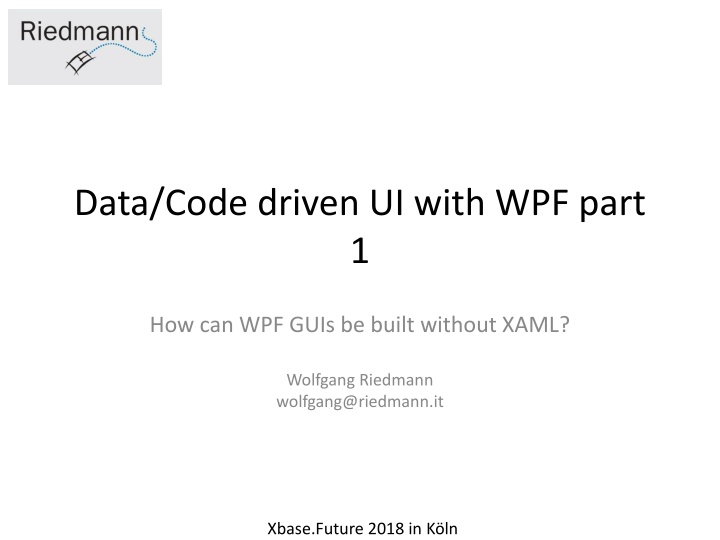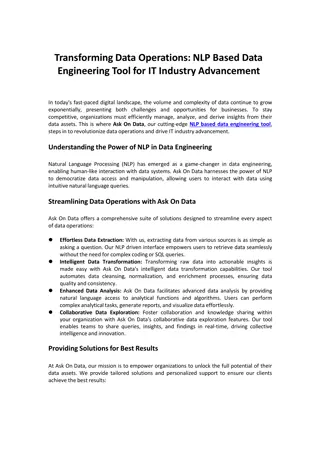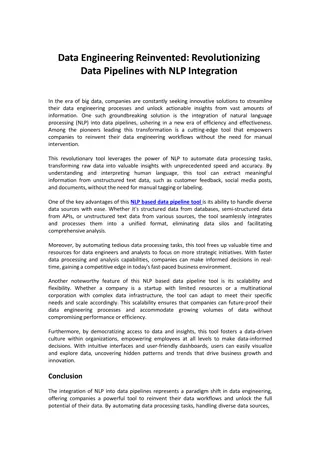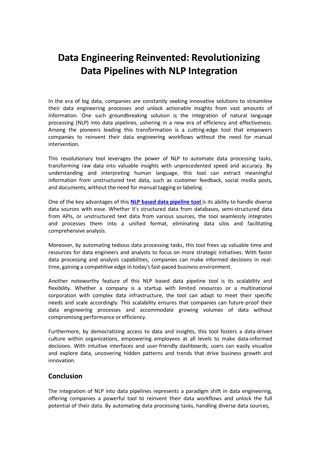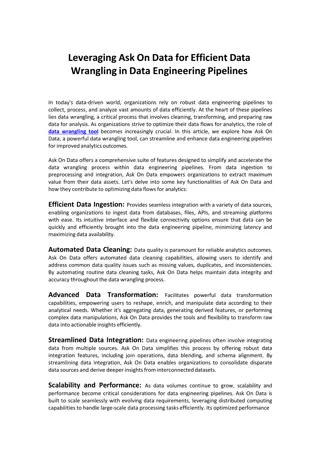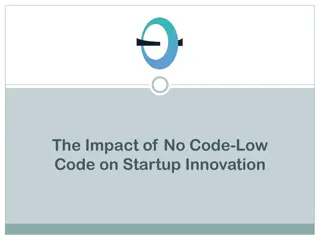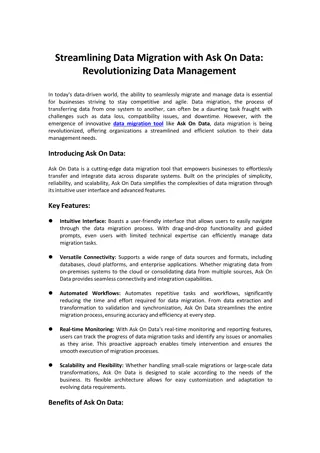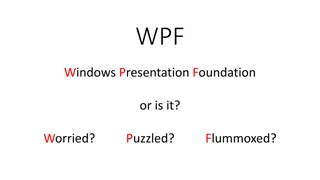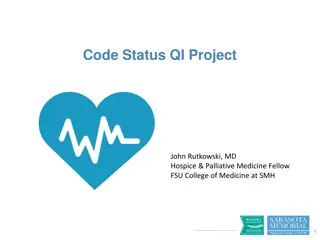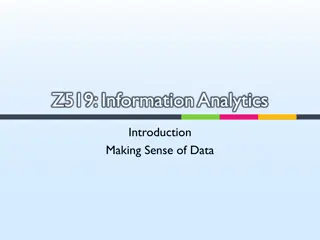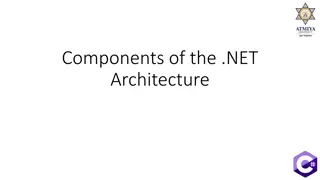Data/Code driven UI with WPF part
Explore a unique approach to constructing WPF GUIs without XAML, leveraging dynamic positioning, powerful databinding, and future-proof design principles. Learn how Windows Presentation Foundation revolutionizes GUI development for diverse screen sizes and resolutions.
Download Presentation

Please find below an Image/Link to download the presentation.
The content on the website is provided AS IS for your information and personal use only. It may not be sold, licensed, or shared on other websites without obtaining consent from the author.If you encounter any issues during the download, it is possible that the publisher has removed the file from their server.
You are allowed to download the files provided on this website for personal or commercial use, subject to the condition that they are used lawfully. All files are the property of their respective owners.
The content on the website is provided AS IS for your information and personal use only. It may not be sold, licensed, or shared on other websites without obtaining consent from the author.
E N D
Presentation Transcript
Data/Code driven UI with WPF part 1 How can WPF GUIs be built without XAML? Wolfgang Riedmann wolfgang@riedmann.it Xbase.Future 2018 in K ln
Disclaimer What you will not see in this session: The absolute truth The best or the only solution 100% error free and perfectly written code What you will see instead: Another (and not commonly used) possibility to build WPF GUIs A solution to build windows and UserControls dynamically A possible solution for multilanguage applications Graphical design without using stylesheets, possible also on an individual base Hopefully a better understanding how WPF works internally Xbase.Future 2018 in K ln
Why WPF and not WinForms Futureproof: WPF is a completely new designed GUI plattform that is not tight to the Windows GUI. If Microsoft will write a platform independent GUI library, then it will be a descendant to WPF WPF is completely vector oriented and scales from low resolutions on cheap tablets until high resolution devices like 4K monitors The design of WPF permits nearly unlimited possibilities to build complex UserControls simply assembling them from the base controls WPF is highly dynamic windows and controls should not be positioned by specifying coordinates, but by using content controls like panels or grids WPF has a very powerful databinding and is very well suited for MVVM applications Xbase.Future 2018 in K ln
What is different in WPF The VO-GUI-Klassen are using coordinates like WinForms and the entire Windows GDI. WPF works like HTML with content controls and distances. It is possible to use WPF als with coordinates (using the CanvasControl), but you will loose the biggest advantage of WPF the dynamic positioning To build a WPF windows successfully, as first thing you should think how this window should adapt itself to different screen sizes. Only if you are sure about this you should start to work. Only if you respect this your result will work well on very different screen sizes and resolutions. Xbase.Future 2018 in K ln
Our target A simple window, with databinding to a ViewModel for data and actions (Commands) Xbase.Future 2018 in K ln
The first try: XAML Xbase.Future 2018 in K ln
The second try: Code Xbase.Future 2018 in K ln
3rd try: Own control classes Xbase.Future 2018 in K ln
3rd try: The window Xbase.Future 2018 in K ln
Idea: build a windows dynamically Xbase.Future 2018 in K ln
And DBF? Xbase.Future 2018 in K ln
The DataGrid first in XAML Xbase.Future 2018 in K ln
The DataGrid in Code Xbase.Future 2018 in K ln
The DataGrid with an own class Xbase.Future 2018 in K ln
The DataGrid and with DBF? Xbase.Future 2018 in K ln
Finished Thank you for your attention! Xbase.Future 2018 in K ln
